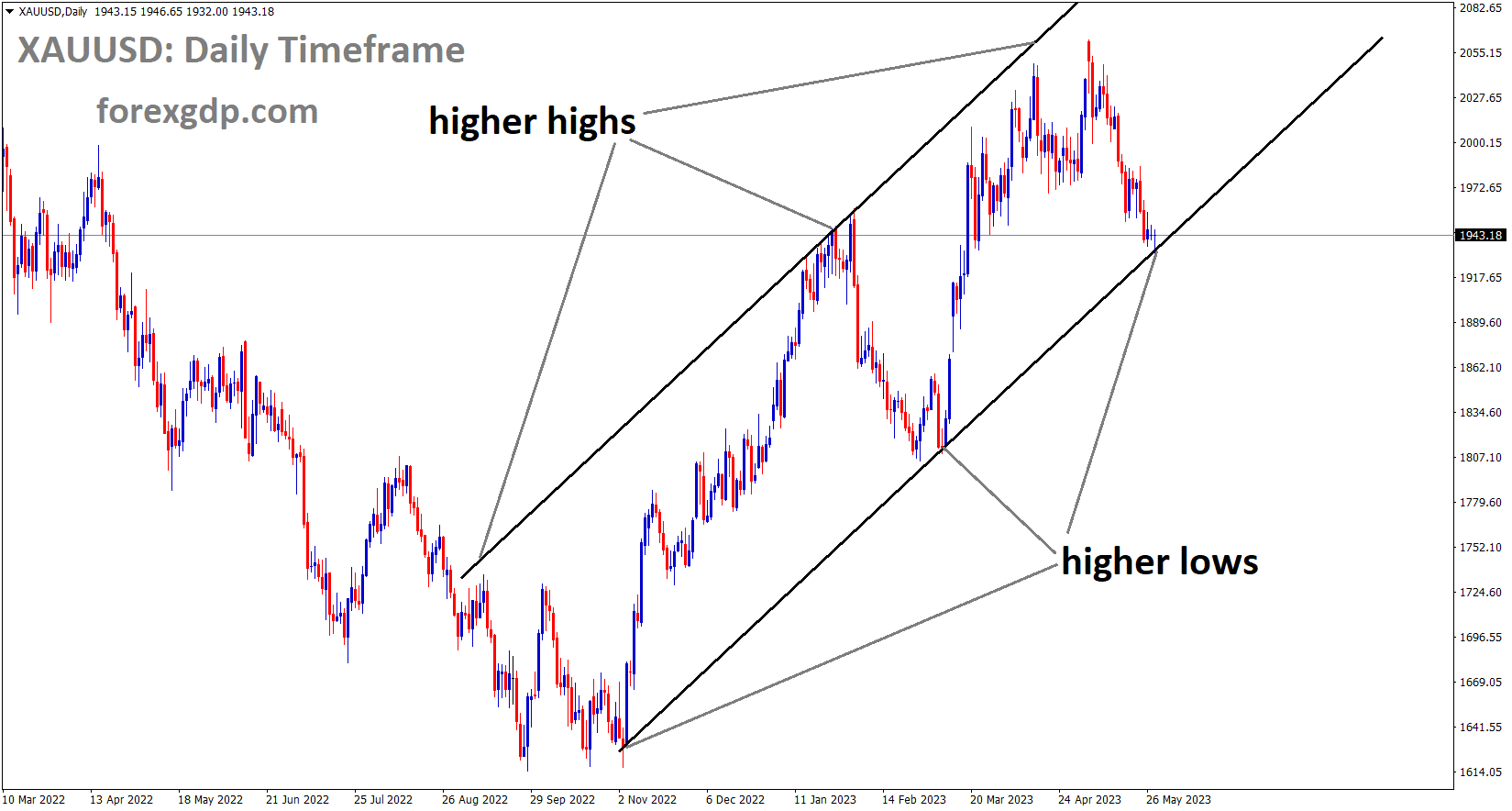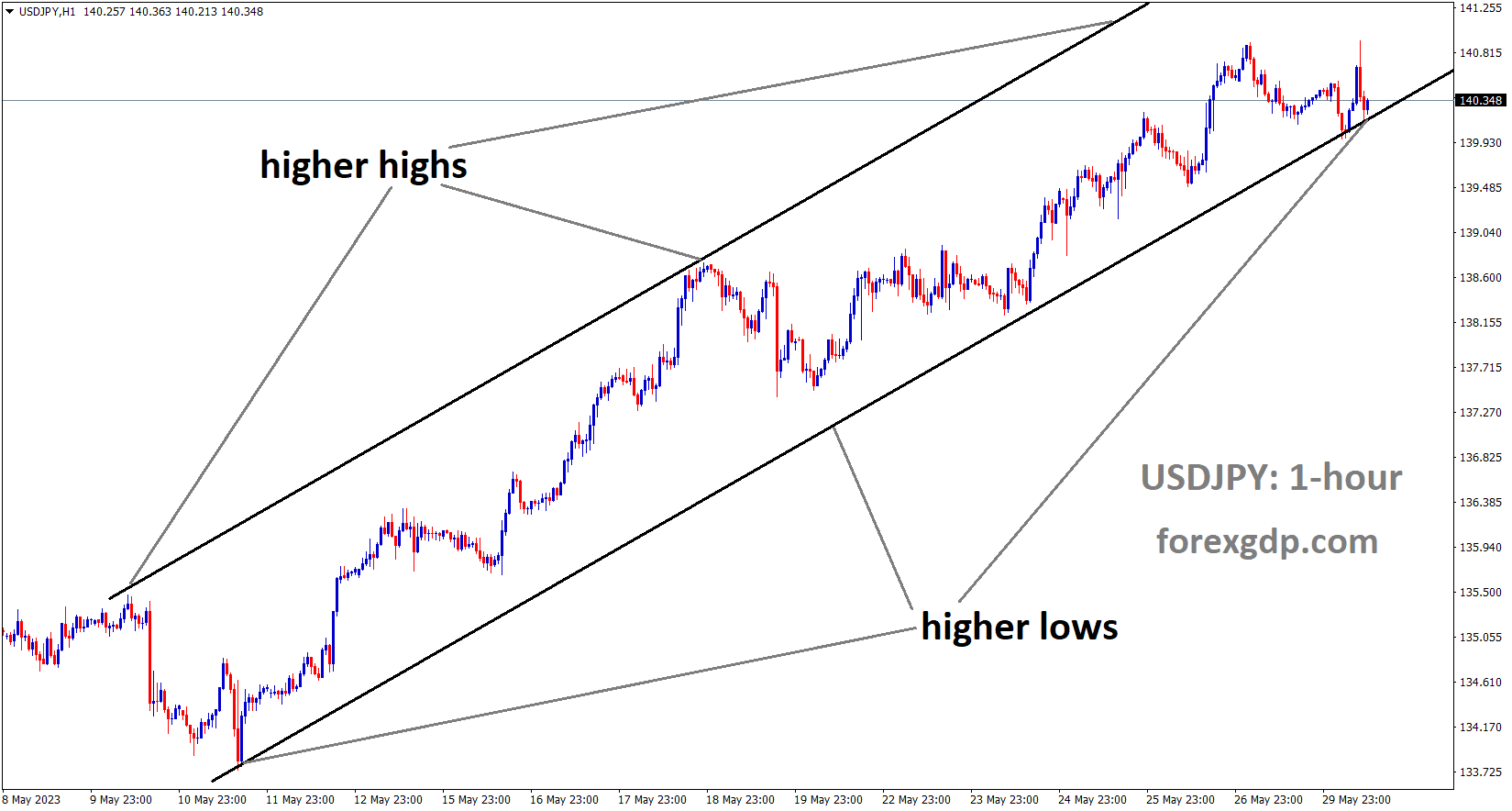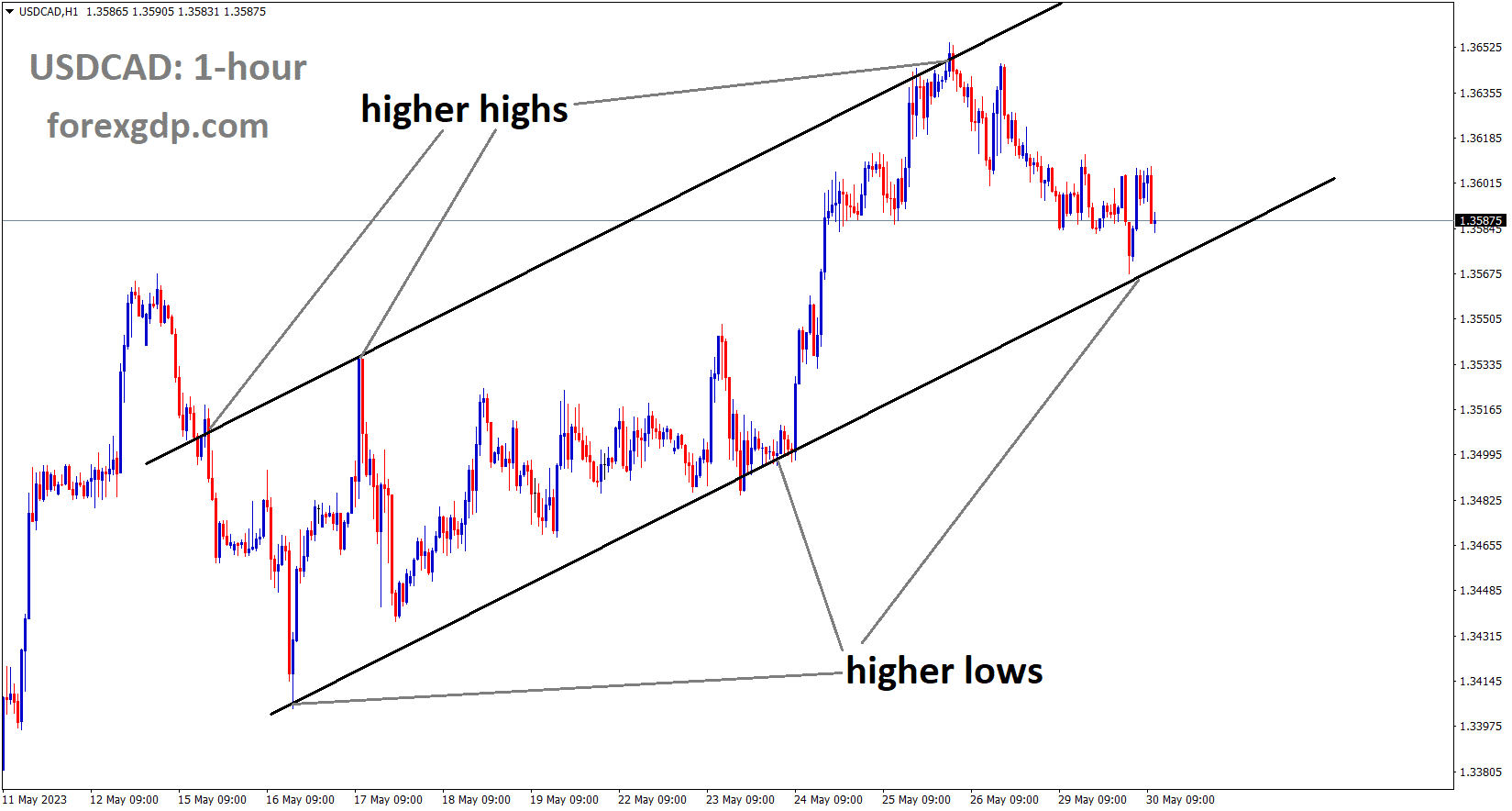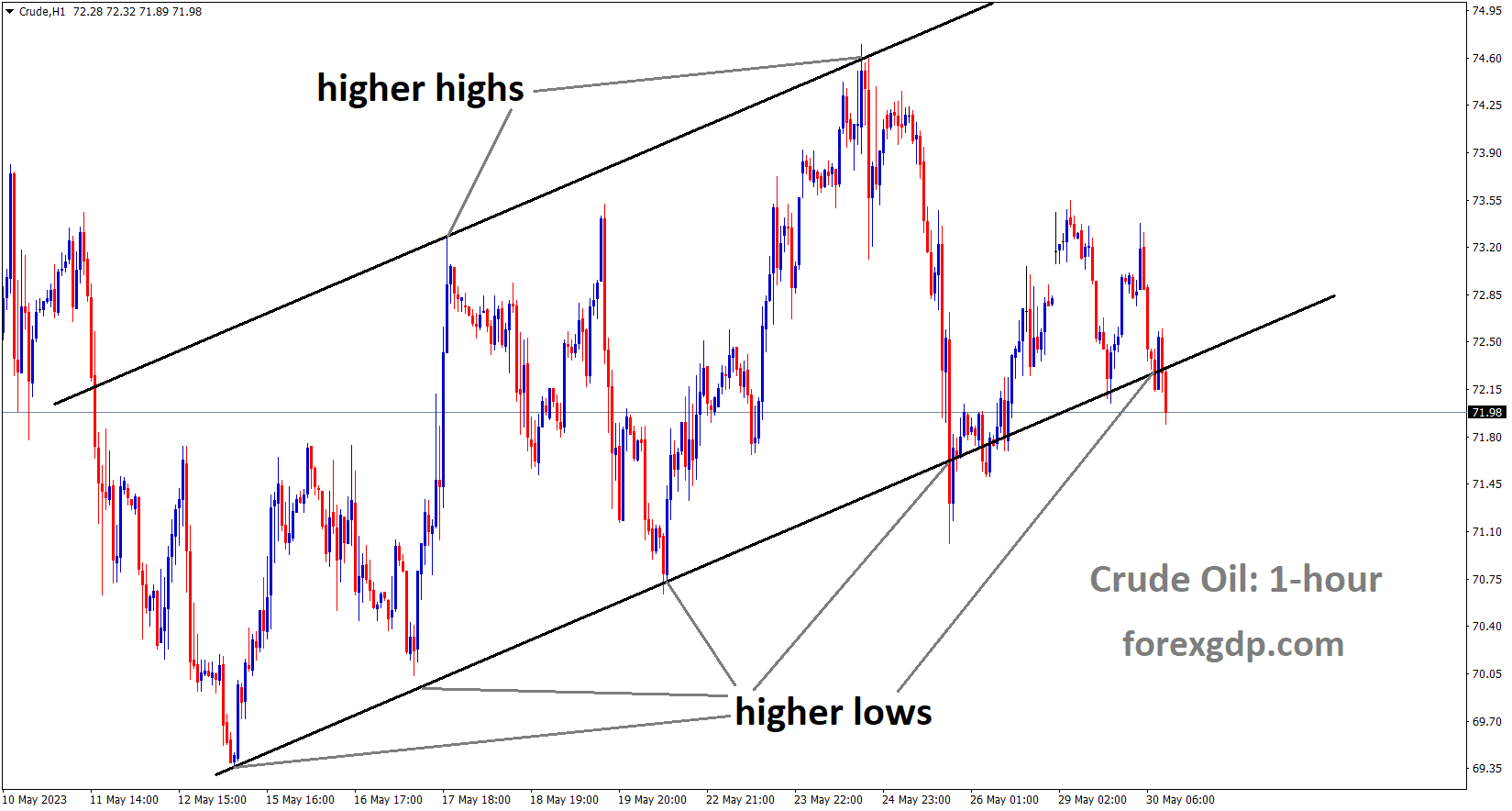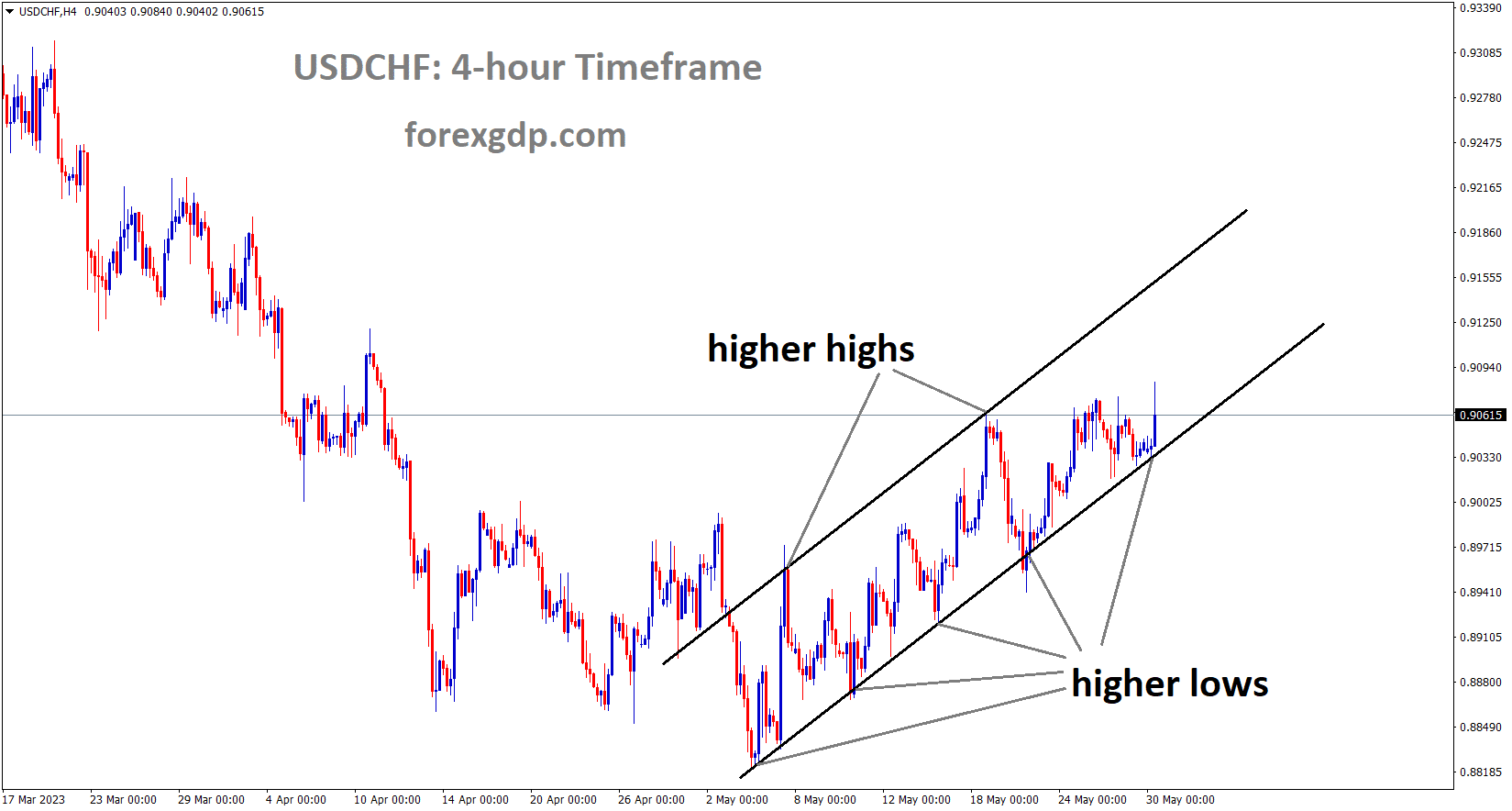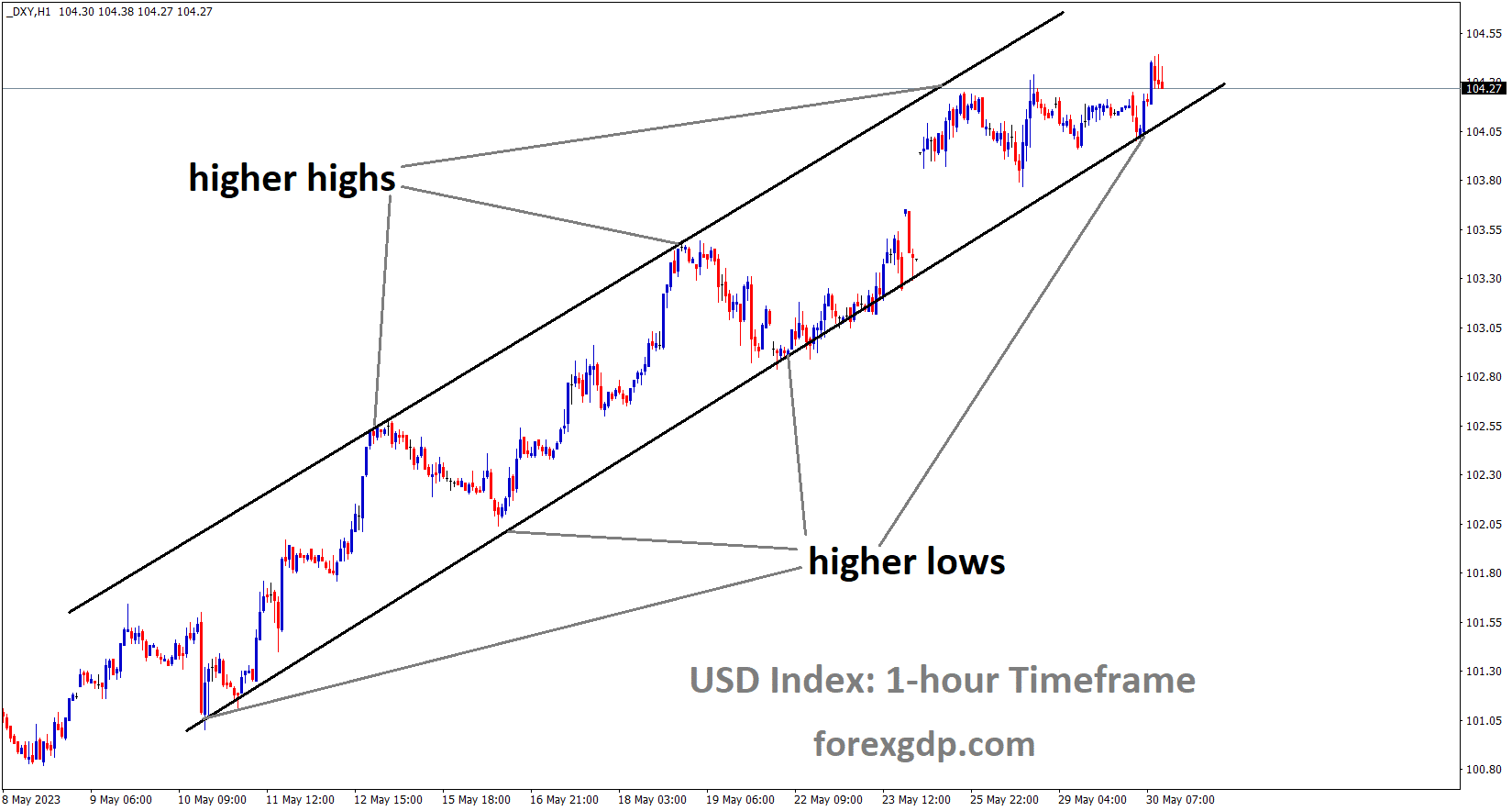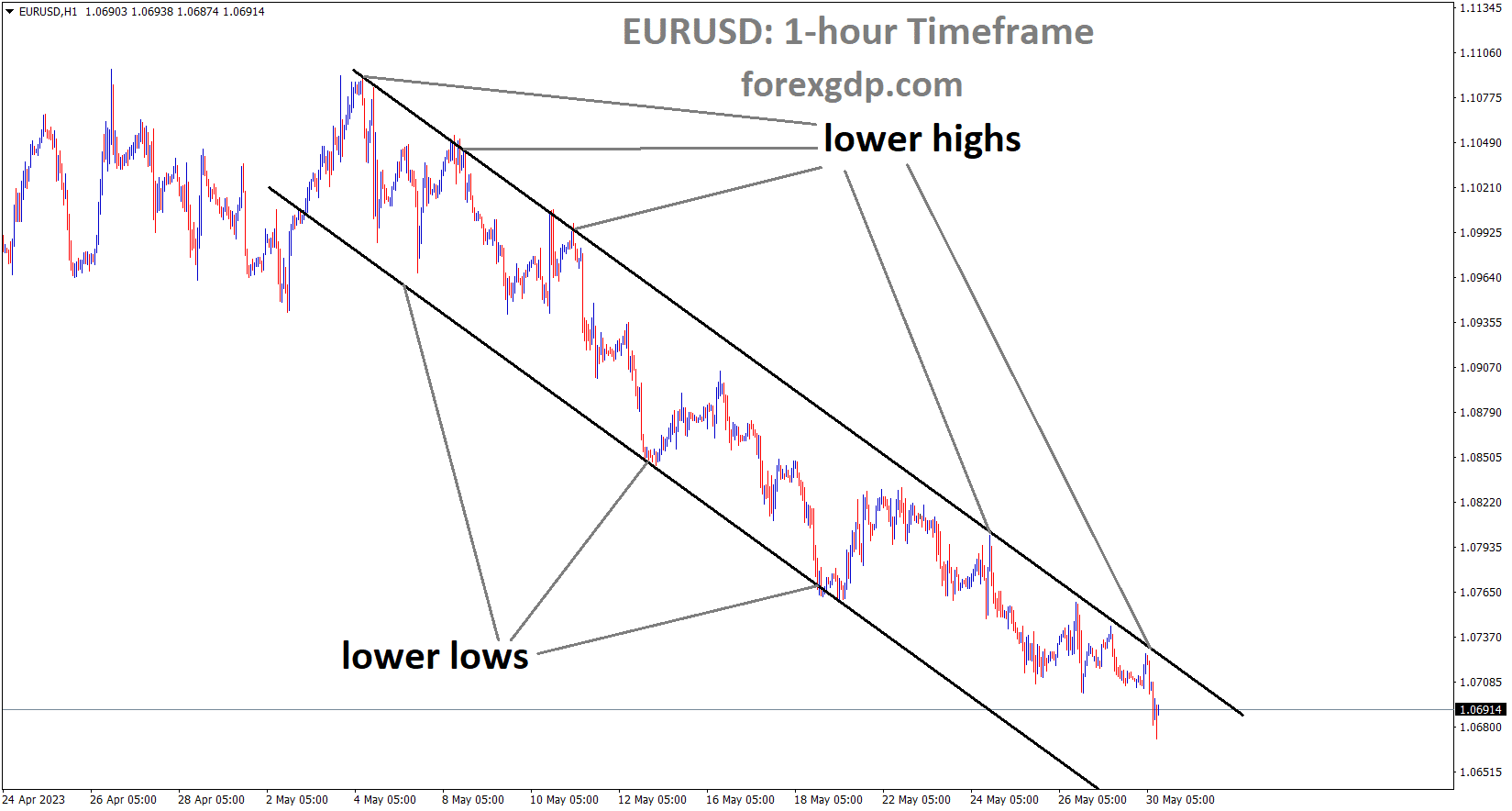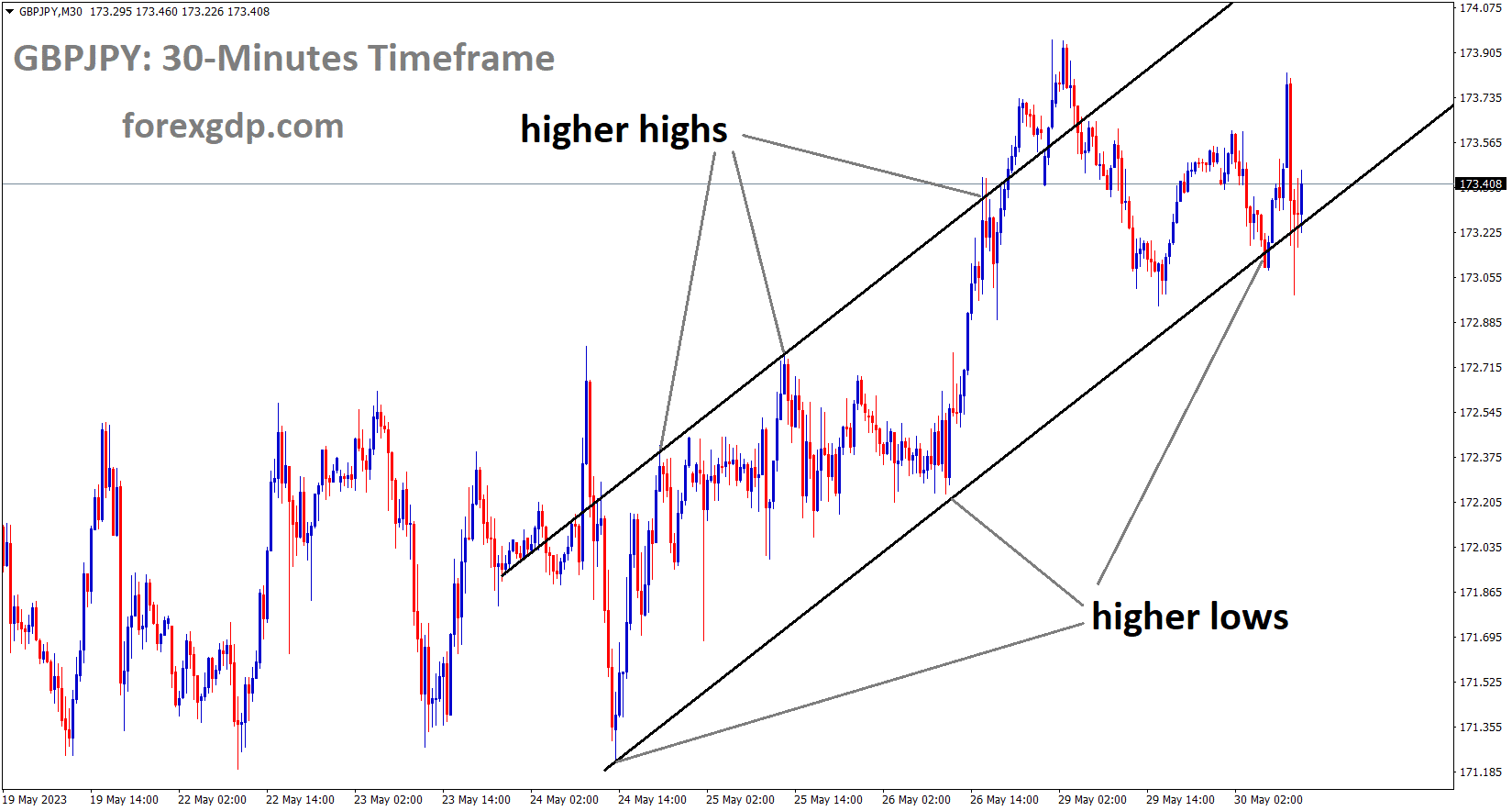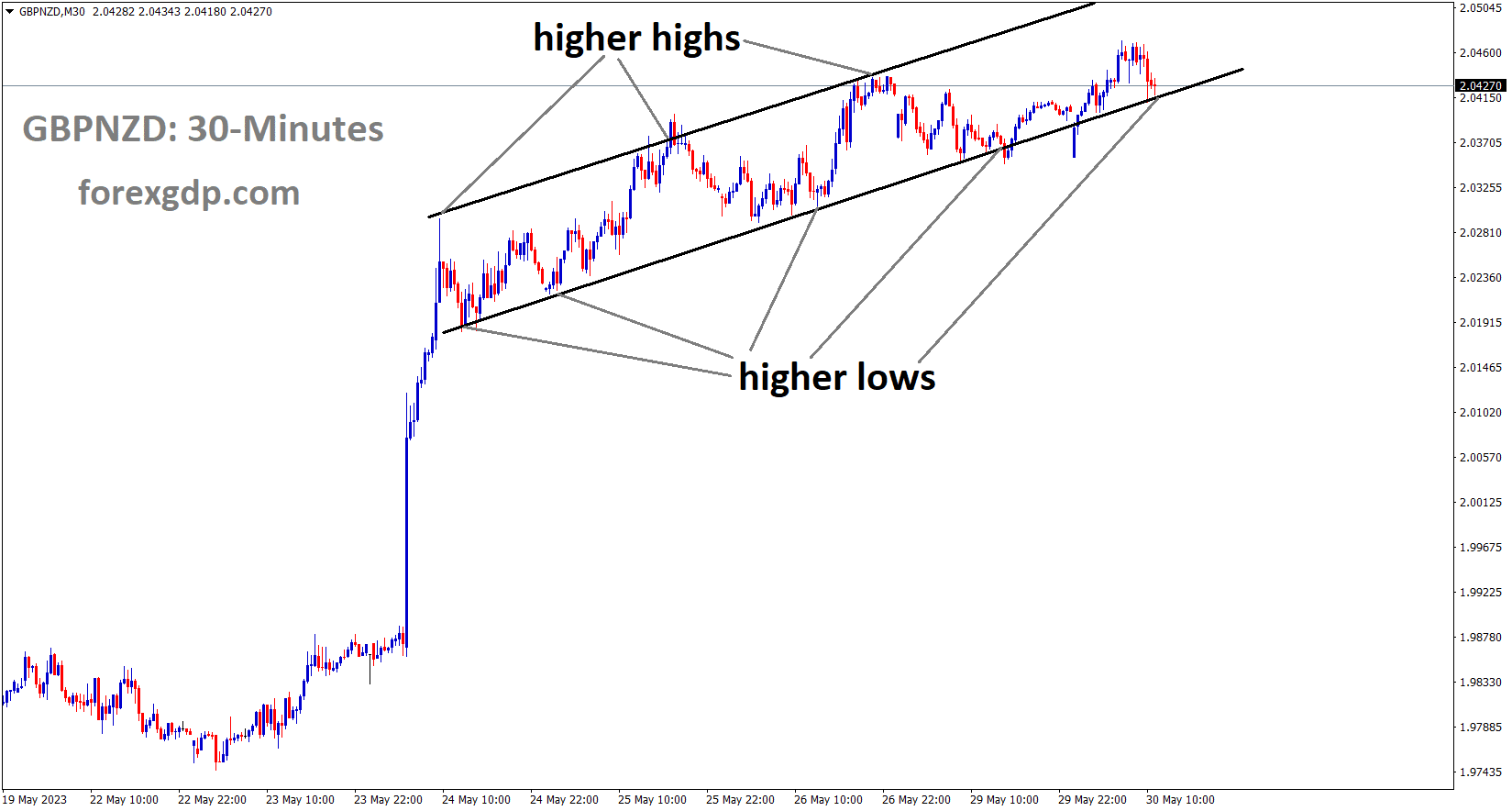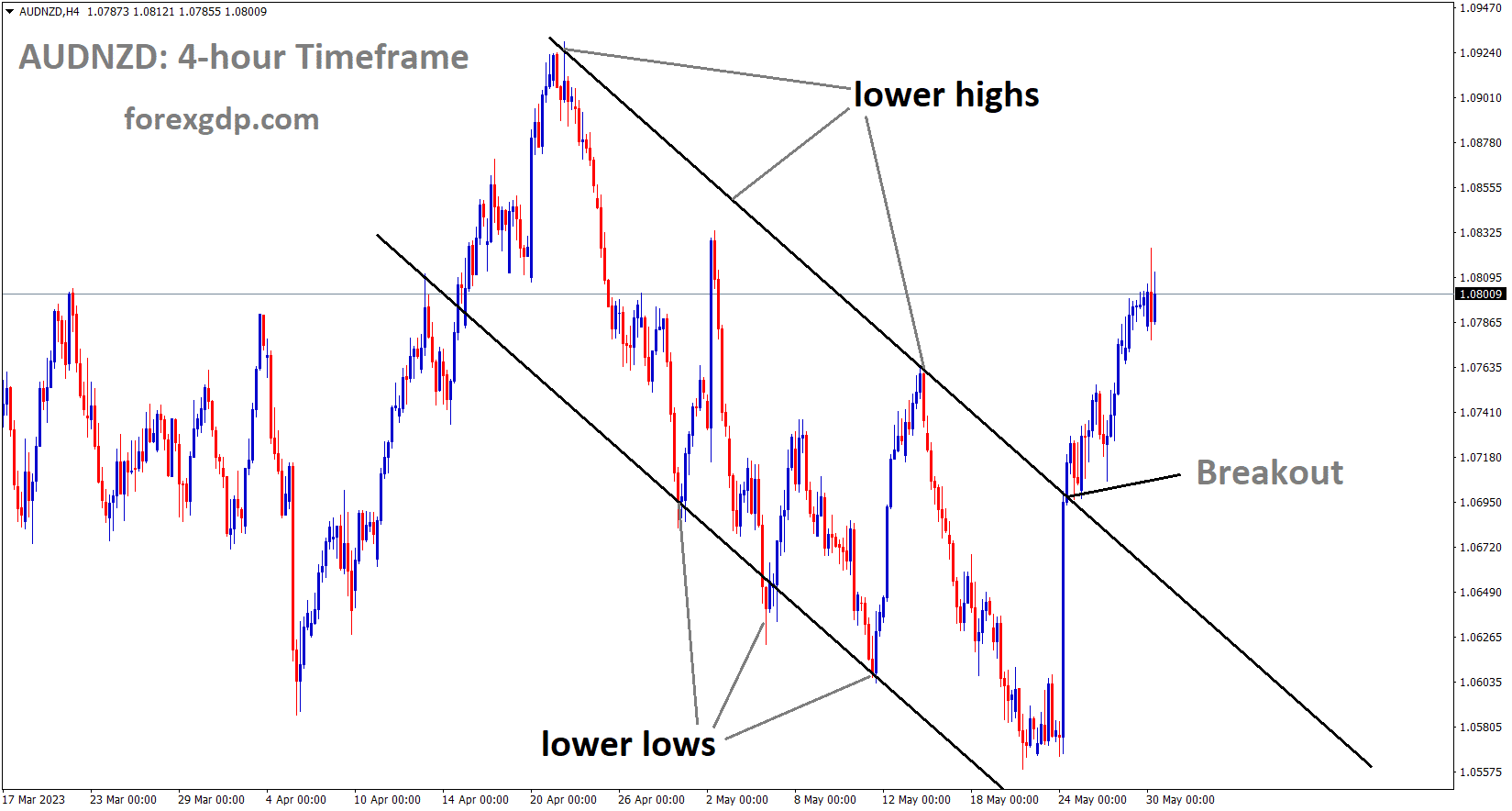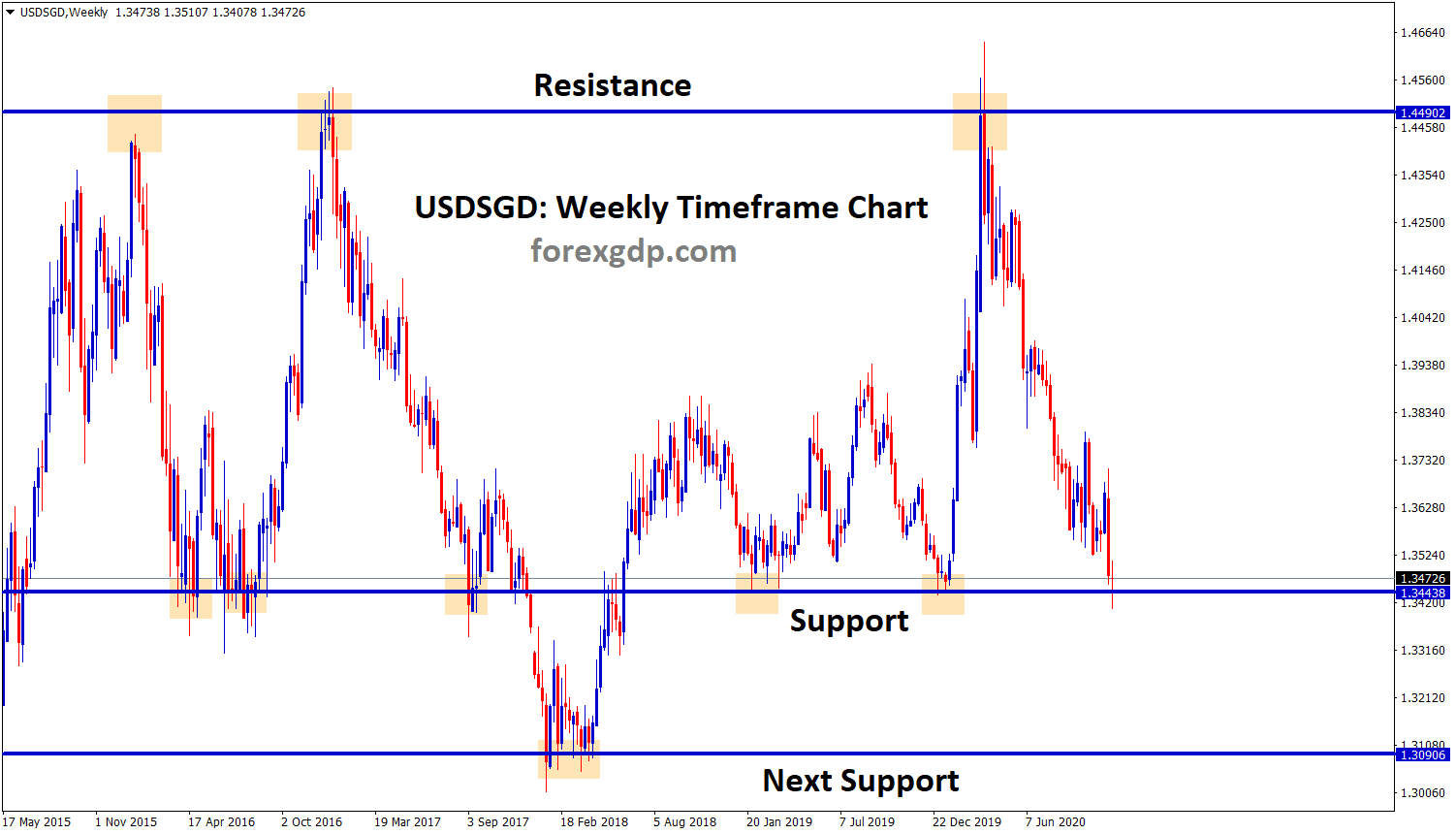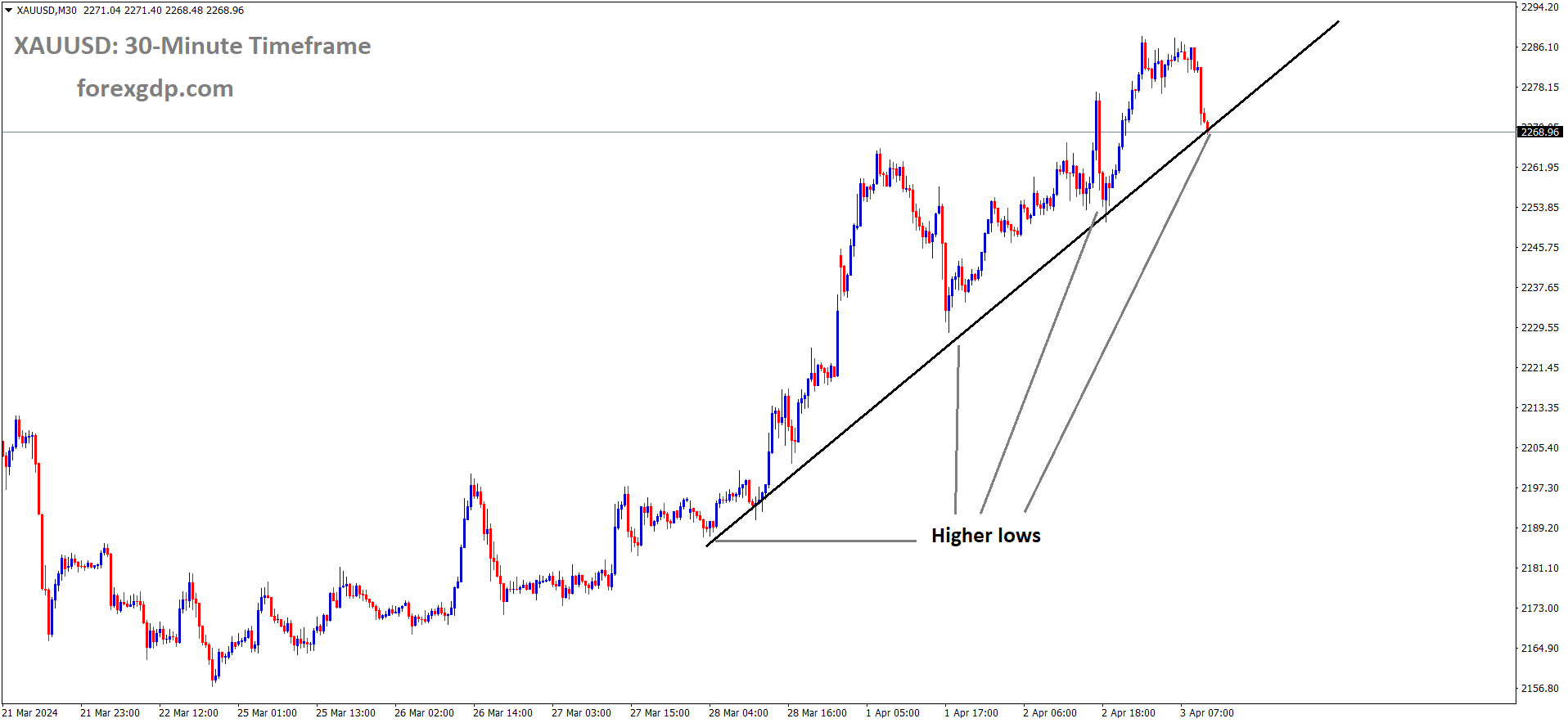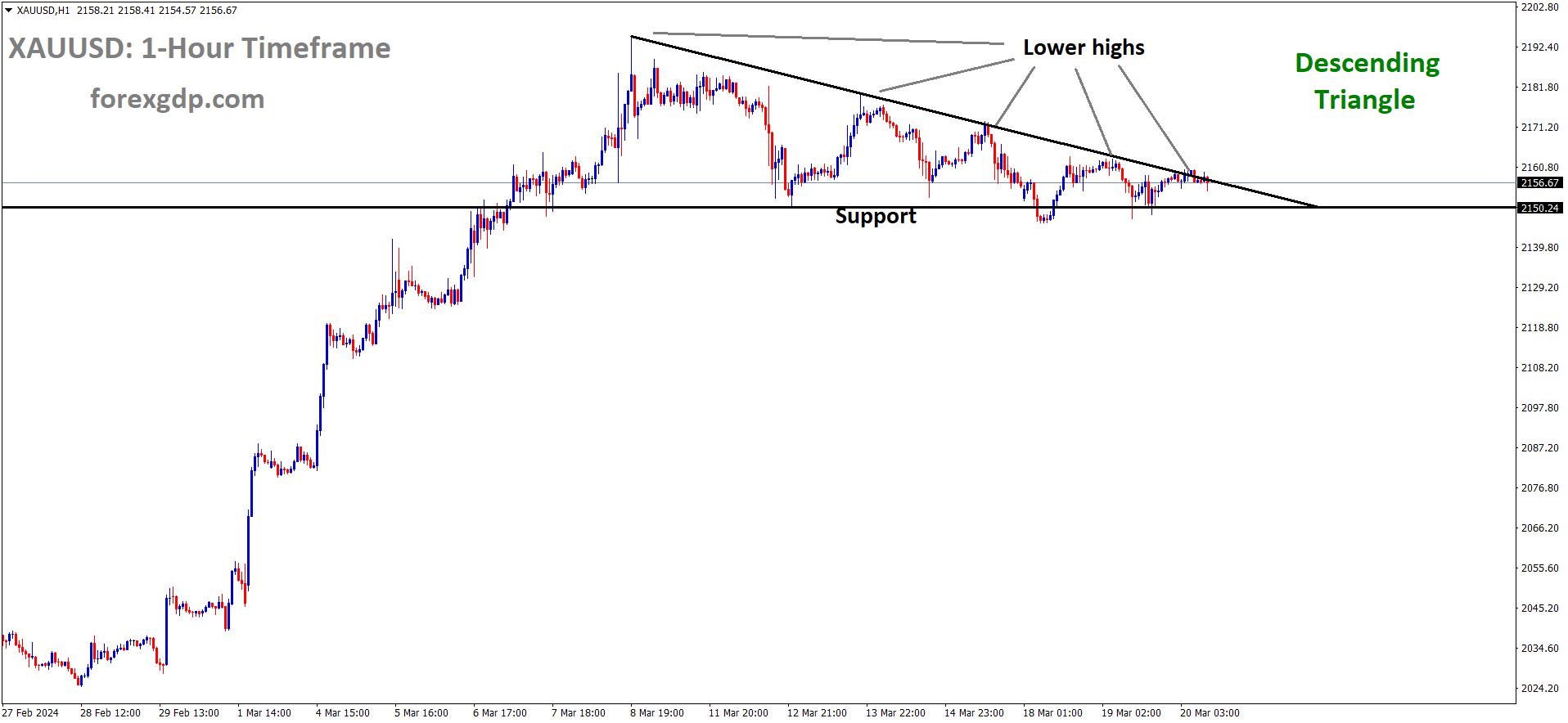GOLD Analysis
XAUUSD Gold Price is moving in an Ascending channel and the market has reached the higher low area of the channel.
Due to the tight labour market and strong consumer spending in the US, gold prices have fallen. If inflation rates are unable to decrease each month, the US FED may increase interest rates.Today’s scheduled US ADP data is anticipated to be lower than previous figures.
After a brief pullback move to close to $1,946.70 in the Asian session, the price of gold experienced intense selling pressure. The price of the precious metal has decreased even further, approaching $1,940.00, as the US Dollar Index has made up all of its losses and is attempting to set a new day high above 104.34. Investors are concerned that Tuesday’s trading session could be extremely volatile after a long weekend, so S&P500 futures are consistently erasing Monday’s gains. Investors are expecting the Federal Reserve to raise interest rates once more, which has caused a cautious tone to spread throughout the market.Earlier, Fed Chair Jerome Powell stated that as the economy’s liquidity disbursement has decreased, the tight credit conditions imposed by US regional banks are helping the central bank. Businesses are content with operating at lower capacity due to difficulties they are having increasing their working capital requirements.
Freshly released data, however, revealed that consumer spending is surging in the US economy and that labour market conditions have not eased as anticipated, forcing the Fed to keep tightening policy. The publication of the US Employment data this week will shed more light on the direction of interest rates. The consensus predicts that Thursday’s Automatic Data Processing Employment Change will be 170K less than the previous release of 296K.
USDJPY Analysis
USDJPY is moving in an Ascending channel and the market has rebounded from the higher low area of the channel.
Inflation will return after the middle of 2023, according to Bank of Japan Governor Ueda, who also said that the central bank will continue to buy bonds. Ueda advised being wary of loosening monetary policy and waiting patiently for inflation to fall to a manageable 2% level.
In the Asian session, the USDJPY pair has decreased vertically to close to 140.00. A severe sell-off in the US Dollar Index supports the asset’s downward movement. Investors have reduced their long positions in the USDJPY pair as the US debt ceiling increase has diminished the appeal of the USD index and the Bank of Japan’s Yield Curve Control is strengthening the Japanese Yen. S&P500 futures have reduced some gains made previously as investors prepare for extremely volatile trading in New York. Long-weekend positions are anticipated to be closed by investors, which could result in erratic movements. Given that investors are supporting the Federal Reserve’s decision to raise interest rates once more, the risk profile would be cautious. Investors’ optimism that Congress will approve raising the US debt ceiling for two years has resulted in a sharp decline in Treasury yields. The yield on the US 10-year Treasury has fallen below 3.76%.
US employment data this week will be closely scrutinised. The initial release of Wednesday’s JOLTS Job Openings data for Tuesday is anticipated to show a decline to 9.35M from the previous release of 9.59M. US Automatic Data Processing Employment Change will be made public later on Thursday. Estimates show that the US labour market has added 170K new payrolls since the previous addition of 296K. The Nonfarm Payrolls would be the headline-making event on late Friday. The BoJ will patiently maintain the easy monetary policy as there is still a distance to go to stable 2% inflation, BoJ Governor Kazuo Ueda said on the Japanese Yen front on Tuesday. He continued by saying that, although there is uncertainty regarding the outlook, inflation is likely to return after the middle of 2023, driven by wage growth and other factors. The BoJ will continue to purchase bonds in the interim.
USDCAD Analysis
USDCAD is moving in an Ascending channel and the market has reached the higher low area of the channel.
Iran is the best team player in our family group, according to OPEC+ Secretary-General Haitham Al Ghais. We have good relationships and have successfully balanced oil demand and supply over the years. Currently, we also require globally balanced supply and demand chains; the price level is not our target.
Crude Oil Analysis
Crude Oil price is moving in an Ascending channel and the market has reached the higher low area of the channel.
The Organisation of the Petroleum Exporting Countries’ Secretary-General, Haitham Al Ghais, stated in the early hours of Tuesday, “We believe that Iran is a responsible player among its family members, the countries in the OPEC group. As OPEC has consistently done over the past several years, I am confident that there will be good cooperation and synchronisation to ensure that the market will remain balanced. In OPEC, we do not have a set price point in mind. All of our decisions and actions are taken to maintain a healthy balance between the world’s supply and demand for oil, he continued.
USDCHF Analysis
USDCHF is moving in an Ascending channel and the market has rebounded from the higher low area of the channel.
Today’s scheduled Swiss GDP data is for the Quarter month QoQ and is predicted to be 0.10% higher than yesterday’s reading of 0.0%. Before the US, the USDCHF pair is consolidating. The raising of the US Debt Ceiling limit was agreed upon by both parties. Due to the required deal not being compromised with the parties’ fulfilment, US Republican parties are still opposed. Today’s data on consumer confidence for May are scheduled.
The USDCHF declines for a third day in a row after hitting a multi-week high, printing slight losses around 0.9035 early on Tuesday morning in Europe. The broad US Dollar decline is welcomed by Swiss Franc buyers amid generally positive sentiment. The consolidation before today’s important Swiss Gross Domestic Product data for the first quarter of 2023 and the US Conference Board’s May Consumer Confidence report may have also favoured the pair sellers. However, as firmer sentiment weighs on the demand for the US Dollar as a haven, the US Dollar Index reverses from a six-month-old resistance line to print the first daily loss in seven at around 104.10. The market’s cautious optimism is supported by the traders’ return to the major exchanges following a long weekend and their subsequent response to the US policymakers’ agreement to extend the debt ceiling until January 2025. Although some US policymakers, primarily Republicans, have expressed concerns about the compromises made to their original demands in order to reach a deal. The decision-makers also indicate a willingness to challenge the agreement in the House and the Senate, which encourages the market’s prior risk-on attitude and keeps the US Dollar competitive.
In a sign that the bipartisan agreement could face a difficult path through Congress before the US runs out of money next week, a few hard-right Republican lawmakers said on Monday that they would oppose a deal to raise the $31.4 trillion debt ceiling for the US. The S&500 Futures, which had earlier retreated from their yearly high, print modest gains of around 4,220, reflecting the mood, while US Treasury yields are falling as of press time. The Swiss Q1 GDP will provide immediate direction for the USD/CHF pair before the US CB Consumer Confidence for May, which is predicted to decline from prior readings of 101.30 to 0.1% QoQ. Priority events for the USD/CHF pair traders to watch for clear direction include Wednesday’s US House vote on the debt-ceiling agreement, the Senate’s approval of the same before June 5, and Friday’s US jobs report.
USD Index Analysis
USD index is moving in an Ascending channel and the market has rebounded from the higher low area of the channel.
The voting process for the US debt ceiling will start on Wednesday. Both parties have agreed that the vote must pass through Congress and result in a deal before June 5th. US Treasury Secretary Janet Yellen has already stated that if US Government payments are not made by the deadline of June 5, the US economy will experience catastrophic consequences.
Tuesday is likely to see bigger market movements after a quiet Monday. Japan will present April’s unemployment rate during the Asian session, and New Zealand and Australia will present April’s building permits data. Spain will present its preliminary inflation data in Europe. After the agreement on the debt limit, focus in the US is shifting to Congress. Tuesday’s US data will include figures for housing and consumer confidence. The release of the NFP report is scheduled for Friday.Following an agreement in principle between US President Biden and Speaker Kevin McCarthy to raise the debt limit for two years, there was more activity over the weekend than on Monday. The agreement must be approved by both the House and the Senate by the June 5 deadline. Janet Yellen, the Treasury Secretary, warned that the US might run out of money on that day. On Wednesday, the Congress is anticipated to vote. Despite the fact that many European markets and Wall Street were closed on Monday, the US agreement improved market sentiment. The DXY closed with modest gains while the US dollar weakened slightly.
EURUSD Analysis
EURUSD is moving in the Descending channel and the market has fallen from the lower high area of the channel.
Prior to the US Government Voting System to make arrangements to avoid the US Default by June 5th, Germany’s economic data indicate impending doom and the Euro pair exhibits weakness in the markets.We already raised rates by 400 basis points, according to ECB policymaker Pierre Wunsch, and additional rate increases will be needed in the coming months to lower inflation.
The Federal Reserve has been hawkish, and there are concerns about the European Central Bank’s ability to raise rates further, which has kept the Euro pair on the back foot for six days in a row. The most recent shift in market sentiment, which makes it difficult for traders to applaud the US policymakers’ agreement on the debt ceiling extension to January 2025 before the House and Senate vote on the bill prior to the US default date of June 5, is also putting downward pressure on the major currency pair. Even though policymakers continue to cite higher inflation problems and defend the tighter monetary policy, the previous week’s disappointing German growth figures renewed worries about the old continent’s economic slowdown and pushed back the hawkish ECB bets. The most recent of them to say this on Saturday was ECB Policymaker Pierre Wunsch. He said, “We hiked 400bp and we might have to do more. Additionally, Greek President is considering appointing a caretaker PM prior to a repeat election on June 25, which raises geopolitical concerns in the bloc and weighs on the EURUSD prices. Additionally, Spanish PM Pedro Sanchez announced snap elections in July.
However, some US policymakers, primarily Republicans, are against the concessions made to their original demands in order to reach a deal, making it difficult for traders to celebrate the successful negotiations to avert the US default. The decision-makers also indicate a willingness to challenge the agreement in the House and the Senate, which encourages the market’s prior risk-on attitude and keeps the US Dollar competitive. In this environment, the US stock futures post modest gains, but Treasury bond yields continue to be under pressure and pose a threat to the bulls of the US Dollar Index, which oscillates around a nine-week high against the six major currencies. The Consumer Confidence data for May from the US Conference Boards and the Eurozone will provide traders of the EURUSD pair with immediate guidance. However, the key events to watch for a clear indication are Wednesday’s US House vote on the debt-ceiling agreement, Thursday’s Eurozone inflation data and the Senate’s approval of the same before June 5, as well as Friday’s US jobs report.
GBPJPY Analysis
GBPJPY is moving in an Ascending channel and the market has reached the higher low area of the channel.
According to the British Retail Consortium, higher inflation in the UK is to blame for higher shop price index figures, which increased from 8.8% to 9.0% in April. According to Jonathan Haskel, a policy maker for the BoE, monetary policy should be tightened to keep inflation under control.
The Cable pair benefits from both the hawkish expectations surrounding the Bank of England. A record pressure on inflation was conveyed by the British Retail Consortium earlier in the day when it released Shop Price Index figures for April. Despite this, the BRC Shop Price Index increased in April from 8.8% to 9.0%. It is important to note what BoE policymaker Jonathan Haskel said on Friday: We will tighten policy if we do see evidence of more inflation persistence.
GBPNZD Analysis
GBPNZD is moving in an Ascending channel and the market has reached the higher low area of the channel.
The Caixin Manufacturing PMI data for China is currently in the spotlight; it is estimated to be 49.5, but anything below 50.0 indicates weaker manufacturing activity in China following the lifting of the strict lockdown.
China is New Zealand’s top trading partner, so a decline in manufacturing activity highlights how boring the New Zealand Dollar is compared to the US Dollar.
The Caixin Manufacturing PMI data will continue to be the focus on the New Zealand Dollar front. At 49.5, the economic data is seen to be stable. Despite the economy being reopened after a strict lockdown period, factory activity in China does not appear to be showing a confident recovery. A value of 50.0 indicates a decline in economic activity. An increase in factory activity would hurt the New Zealand dollar because New Zealand is one of China’s top trading partners.
AUDNZD Analysis
AUDNZD has broken the Descending channel in upside.
Building Approval for the month of April decreased to 8.1% MoM from a predicted 0.20% increase and -0.10% from the previous reading, continuing the Australian Dollar’s downward trend. At its meeting the following week, RBA is not likely to raise interest rates.
Despite some weak domestic data on Tuesday, the Australian Dollar is still strong. Building approvals for April fell 8.1% month-on-month, below estimates of a 2% rise and -1.0% prior. The information may confirm the opinion of the interest rate markets that the RBA will maintain rates at its monetary policy meeting next week.
Don’t trade all the time, trade forex only at the confirmed trade setups.
Get Live Free Signals now: forexgdp.com/forex-signals/

